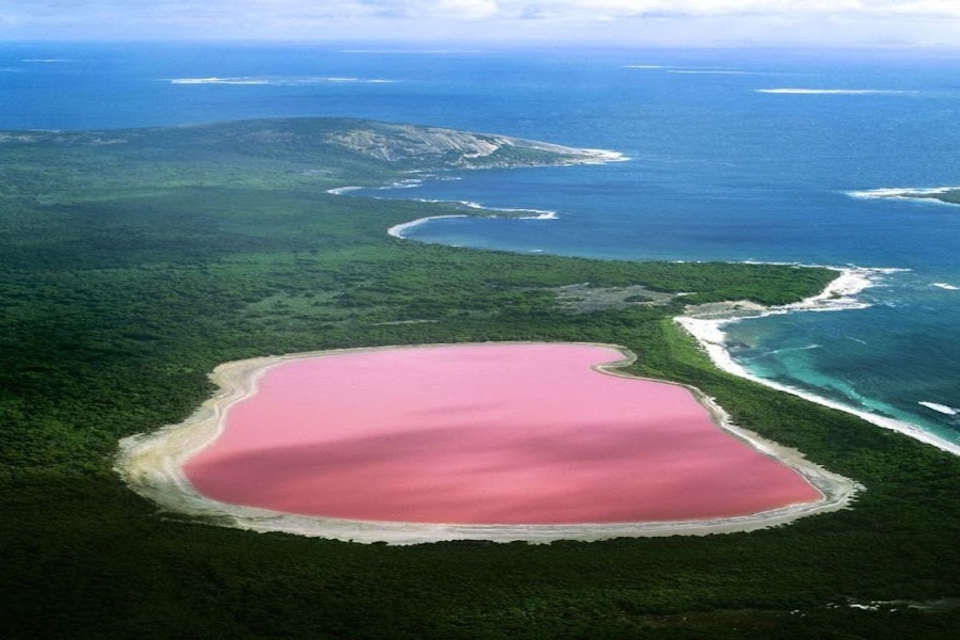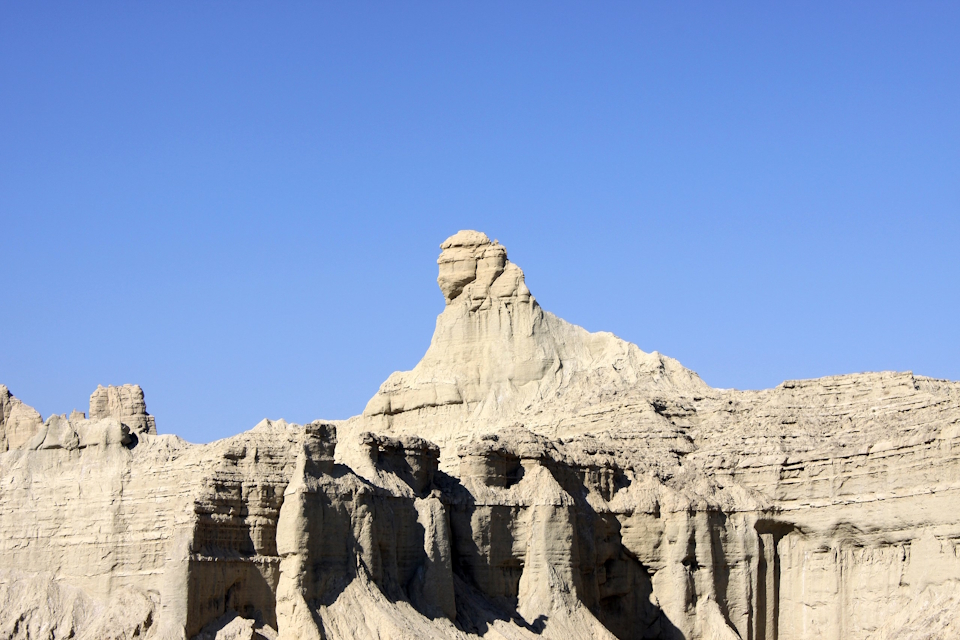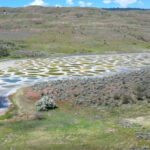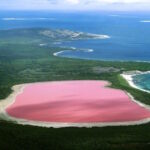Now Reading: Spouting Horn and Thor’s Well: Oregon’s Breathtaking Coastal Wonders
-
01
Spouting Horn and Thor’s Well: Oregon’s Breathtaking Coastal Wonders
Spouting Horn and Thor’s Well: Oregon’s Breathtaking Coastal Wonders

The Oregon Coast is home to some of the most stunning and dramatic geological formations in the United States. Among these are Spouting Horn and Thor’s Well, two captivating features located near Cape Perpetua, where the relentless force of the Pacific Ocean meets ancient volcanic rock. These sites have drawn visitors and scientists alike, fascinated by the interplay of ocean waves and coastal geology. But what exactly are Spouting Horn and Thor’s Well, and how did they form?
Spouting Horn: A Natural Oceanic Blowhole
Spouting Horn is a blowhole, a coastal feature where incoming ocean waves forcefully eject water and mist through a narrow opening in the rock. This process creates a spectacular display, resembling a geyser or whale’s spout. The mechanism behind Spouting Horn’s eruptions is straightforward yet awe-inspiring:
Wave Action – As waves crash against the rocky shoreline, water rushes into an underwater sea cave or tunnel.
Hydraulic Pressure – The force of the waves compresses the trapped air and water inside the tunnel.
Water Ejection – The compressed air and water escape through an opening in the rock, shooting up as a high-pressure spray.
The height and intensity of Spouting Horn’s spray depend on wave strength, tidal conditions, and ocean swells. During storms or high tides, the effect is even more dramatic, with towering jets of water accompanied by a loud, hissing roar. The geological composition of the Oregon Coast, which consists of basaltic lava flows from ancient volcanic activity, contributes to the formation of such blowholes by providing the necessary cavities and fractures in the rock.
Blowholes like Spouting Horn are relatively rare, as their formation depends on specific conditions: a sea cave must develop in a way that allows ocean water to rush in, yet also have an opening at the top to forcefully expel the trapped air and water. Over thousands of years, the persistent erosion by waves helps enlarge and shape these formations, ensuring their continued activity.
Thor’s Well: The ‘Drainpipe of the Pacific’
Just a short distance from Spouting Horn, Thor’s Well presents an equally mesmerizing sight. Sometimes called the Drainpipe of the Pacific, Thor’s Well is a seemingly bottomless hole in the rock that appears to swallow the ocean as waves crash over it. In reality, Thor’s Well is a collapsed sea cave with an opening at both the top and bottom. Here’s how it works:
Wave Surge – As waves roll in, water rushes into the submerged cavern.
Overflow and Drainage – When the cavern fills, water surges upward, creating a dramatic bubbling effect.
Retreating Water – As the wave recedes, the water drains rapidly through the lower opening, making it look as though the ocean is disappearing into the Earth.
Thor’s Well is at its most breathtaking during high tide or stormy conditions when the rising water enhances the cycle of filling and draining. However, it can be dangerous for visitors, as the surrounding rocks are slippery and the ocean’s force is unpredictable. Rogue waves can strike suddenly, making it essential for visitors to remain cautious and avoid getting too close to the edge.
The Geological Origins
Both Spouting Horn and Thor’s Well owe their existence to volcanic activity and coastal erosion. Millions of years ago, lava from ancient volcanic eruptions solidified into basalt rock, forming much of the Oregon Coast. Over time, wave action, tides, and weathering carved out caves, tunnels, and channels within the rock. The continuous pounding of the Pacific Ocean eroded weaker sections of these formations, leading to the creation of sea caves, blowholes, and collapsed cavern systems.
A key factor in the development of these coastal features is the nature of hydraulic erosion, where water repeatedly rushes into cracks and fractures in the rock, gradually expanding them. Over thousands of years, the relentless motion of the ocean shapes these dynamic and evolving formations. Climate and sea level changes also contribute to their transformation, as rising tides and increasingly powerful storms accelerate erosion.
Why Are These Features So Unique?
Unlike typical sea caves or coastal cliffs, Spouting Horn and Thor’s Well display a unique interaction between hydraulic forces, rock formations, and ocean waves. Their distinctive behaviors make them popular attractions and important subjects for geological study. Scientists analyze these formations to better understand coastal erosion, wave mechanics, and the long-term effects of ocean forces on rocky shorelines.
Thor’s Well, in particular, has gained widespread attention due to its almost supernatural appearance. Many photographs and videos show it engulfing waves, leading some to speculate about its depth. In reality, Thor’s Well is only about 20 feet (6 meters) deep, though its violent water movements make it look far more intimidating.
Visiting Spouting Horn and Thor’s Well
Both sites are located in Cape Perpetua Scenic Area, just off Highway 101 near Yachats, Oregon. The best times to visit are during high tide or stormy weather, when the wave action is at its most intense. However, caution is essential—rogue waves and strong currents can make the area hazardous. Always stay on designated trails and viewing areas to ensure safety while enjoying these natural wonders.
For photographers, capturing these sites at sunrise or sunset can add dramatic lighting to the already mesmerizing scene. Long-exposure photography can also enhance the effect of moving water, creating surreal images that highlight the power of nature.
Summary
Spouting Horn (Oregon)
-
Location: Just south of Yachats, Oregon, in Cape Perpetua Scenic Area
-
Formation: Created by ocean waves forcing water through a narrow channel in the rocky coastline. This builds up pressure, causing a dramatic water spray to shoot into the air.
-
Best Time to Visit: High tide and stormy conditions amplify the spray, making it more impressive.
-
What to Expect:
-
Water erupts like a geyser, sometimes reaching 20–30 feet high.
-
A loud, deep whooshing sound accompanies each eruption.
-
Safe, elevated viewing areas along the shoreline.
-
Thor’s Well
-
Location: Cape Perpetua, near Spouting Horn, along Oregon’s Highway 101
-
Formation: A collapsed sea cave with an opening at the top. Waves crash over the edges, filling the hole and then draining rapidly, creating the illusion of a bottomless pit.
-
Best Time to Visit: At high tide or just before a storm, when the water surges in and out dramatically.
-
What to Expect:
-
Looks like a giant sinkhole swallowing ocean water.
-
Powerful surges make it both beautiful and dangerous.
-
Best viewed from a safe distance, as rogue waves can suddenly crash in.
-





























